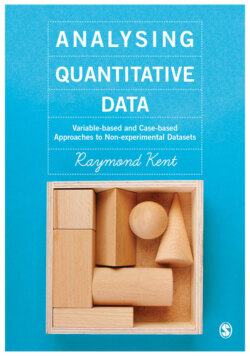Читать книгу Analysing Quantitative Data - Raymond A Kent - Страница 23
Key points and wider issues
ОглавлениеIn constructing data, there is the potential for error from a range of sources including inappropriate specification of cases, biased selection of cases, random sampling error, poor data capture techniques, non-response, response error, interviewer error and measurement error. In reporting the results of social survey research, most researchers tend to focus on random sampling error. This is largely because they can calculate the probability of given sizes of such error based on assumptions about values, differences or covariations in the population of cases from which the sample was drawn, the size of the sample and the variability of measures taken for a given property. These calculations are explained in Chapters 4–6. However, random sampling error is likely to be only a small proportion of overall error and will, furthermore, only exist if a random sample has been taken. Assael and Keon (1982), for example, estimated that random sampling error accounted for less than 5 per cent of total survey error. Some researchers will present evidence of measure reliability; less often, evidence of validity will be suggested. There is a considerable literature on ways of calculating error of various kinds (for a review see Lessler and Kalsbeek, 1992). However, the calculations can get quite complex and most formulae assume metric data, taking the ‘mean square error’ as the key dependent variable which is explained by a range of sources of bias plus random error.
In practice, researchers are more likely to focus on ways of minimizing the likelihood of error arising in the first place by adopting strategies and procedures to control its occurrence.
Error of various kinds can always be reduced by spending more money, for example on more interviewer training and supervision, on sophisticated random sampling techniques, on pilot testing or on getting a higher response rate. However, the reduction in error has to be traded off against the extra cost involved. Furthermore, errors are often interrelated so that attempts to reduce one kind of error may actually increase another; for example, minimizing the non-response errors by persuading more reluctant respondents may well increase response error. Non-sampling errors tend to be pervasive, not well behaved and do not decrease – indeed may increase – with the size of the sample. It is sometimes even difficult to see whether they cause under- or over-estimation of population characteristics. There is, in addition, the paradox that the more efficient the sample design is in controlling sampling fluctuations, the more important in proportion become bias and non-sampling errors.
